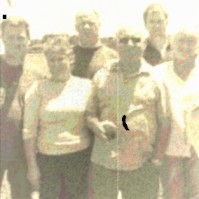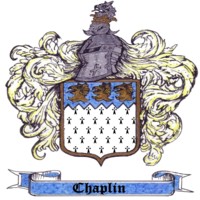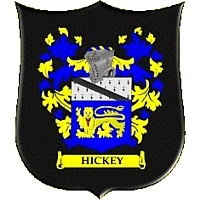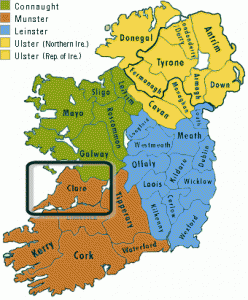The Genealogical Adventure

Family history research has to begin with a somebody, an anchoring individual, and the easiest person to start with is oneself. The interesting (and addictive) discovery, is not so much the information you come across, but in the discovery of who you are in the context of the people around and before you.
The philosopher George Santayana said “Those who do not learn from history are doomed to repeat it”. Knowing one’s own heritage opens a door to stories that reveal patterns which shape one’s life, at times consciously, but to a large extent in the unreflected distinctive habits that unconsciously betray one as being an unmistakable member of that particular family. So the genealogical journey is not just about collecting interesting facts, but also about growing in self-awareness.
“In every conceivable manner, the family is a link to our past, a bridge to our future.” Alex Haley
The Chaplin Family

Spelling variations include; Chaplain, Chaplen, Chapperlin, Chapplen, Chaplyn, Chapplyn, Capp’ll’no, Cappellanus. It would seem the name is derived from the french/latin Cappellanus which designated a clergyman or cleric, or a layman delegated with the care of a chapel or church or military or aristocracy.
The name Chaplin appears in English records going right back to the turn of the first Christian millenium. One example of this is the small town of Groby (pronounced Grooby) situated about 5 miles northwest of the city of Leicester, in the county of Leicestershire, England, UK. In 1066 the Normans, through Hugh de Grentmaisnell took over the running of the village and its lands. Robert de Quincey and William Ferrers, 2nd son of the Earl of Derby, later Baron Groby followed. William Ferrers, Baron Groby is reported as having command of ten villagers, one feeman and five small holders by 1086. A castle mound with tower was erected to underline the Norman presence. In 1338 Henry Ferrers was granted a licence to hold his own market close to the Old Hall, between the present Stamford Arms and Chaplin’s butchers shop. By 1377 Groby had a population of 75 – say 20 families – and surnames familiar to many today were already established. The Abel family were living in Groby by the year 1296, Bates 1304, Bennett 1327, Chaplin 1327, Fletcher 1327, Kemp 1343, Pepper 1371, Prior 1377, Read 1371 & Sutton 1376. This surname written as Capp’ll’no appears on a Subsidy Roll for the Manor of Groby written in the year 1327 (Edward III). The male members of this family were later wood keepers and gamekeepers, tailors and grocers. One Robert Chaplin, in Whites directory of 1877 is listed as a grocer, draper, butcher and postmaster at Groby.
The Chaplin family is spread right across England, but there are some large family clusters, particularly around Leicestershire and Sussex. The family line taken up in this genealogy however, has taken the researcher into the west of County Somerset, where the family seems to have been settled from at least as far back as the sixteenth century.
The Hickey Family

The blazoning of the Hickey Coat of Arms reads: “Azure a lion passant guardant or, on a chief ermine a band sable. A hand in a gauntlet erect, holding in dexter a baton all proper.” The lion is at once one of the oldest and most spectacular charges in armoury, and was associated with royalty even before the emergence of true heraldry. Ermine was one of the two principal furs used in heraldry (black ermine tails on a white field). The baton (or baston) is a bendlet couped at either end. It is usually found borne sinister as a mark of bastardry, particularly in the arms of royalty of illegitimate parentage. (note: The hand in gauntlet and baton is absent on this version of the crest.)

The Hickey Family originate from county Clare, Ireland. The Hickey Sept (division of a clan) is descended from the common ancestor IOCAIGH, Chieftain of his Sept, from whom comes the name O’H-IOCAIGH, (O’Hickey). The Hickey provenance comes from OhÍceADA descendant of ÍceAD, meaning ‘healer’. The name is of a medical family of Dalcassian origin (descendants of Cas were called the Dal gCais, or Dalcassians, e.g. O’Brien, MacDonnell, O’Grady, O’Healy, O’Kennedy, Macnamara, Quinn, Aherne, Malone and of course O’Hickey, making them all kinsmen).
By 940 the Norse invaders had pushed the Dalcassians back into a small area of East Clare, controlling the Shannon river estuary. The Hickeys were hereditary physicians to the O’Briens (descended from Brian Boru, King of Ireland, who died in the battle of Clontarf in 1015, finally expelling the Vikings from Dublin and Ireland), who were not the ruling family in Thomond, but one of the most powerful in Ireland.

Some of them were kings of Munster, and some of all Ireland. They branched into Northern Tipperary and to Limerick by the 13th and 14th centuries, and were noted more as a scholarly group rather than the ancient warriors of Munster. The Hickeys were seated at Ballyhickey, in the parish of Clooney, Co. Clare and the name is now numerous through Munster. Soon after Cromwell’s invasion they branched to England and acquired estates at Billing in the county of North Hampton. Their more recent family seat was at Kilelton